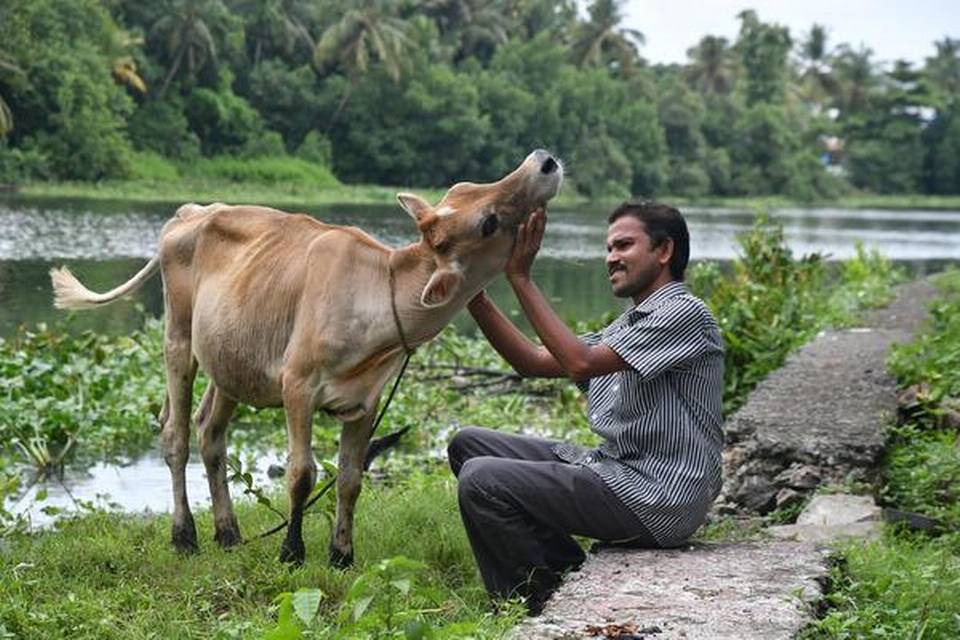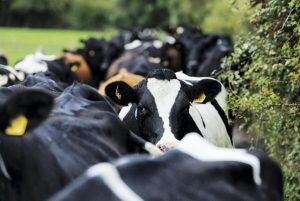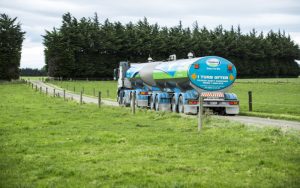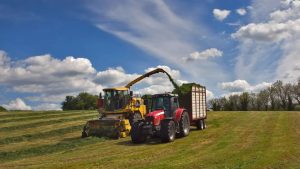The jet-black breed of buffalo is native to Punjab and Haryana, where it is raised for milk and is hardly seen in Kerala. Back home, after seeing the animal, it was all he could think about. The price? ₹1 lakh. “I just had to go back and buy it,” he says. Buffalo milk has many takers among the city’s North Indian community. A dairy farmer, he sells milk to families in and around Panampilly Nagar.
Kochi has a network of informal dairy farmers like Joseph, who kept the milk supply running during the lockdown. These are people whose families have always had cows, the milk from which they sold to neighbours. The dairy sector is perhaps the only one in Kerala’s agriculture sector that did not suffer a price slump due to COVID-19.
“I have had 25-30 enquiries, at least, during the lockdown, but I have only these many cows, plus I have my regular clientèle. There is a surge in demand for milk from dairy farmers like us,” says Prashanth KP of Thykoodam, who rears seven cows with his mother, Shantha P Thampan. He quit his job with an advertising agency to take up dairy farming full-time. “This is more profitable,” says the 36-year-old.
Life had not changed much for him during the lockdown; milk was declared an essential commodity early on. The concern was whether they would be able to deliver milk. “There were anxious moments — I was worried, what would I do with all the milk? But there were no hiccups fortunately,” says Joseph. He cannot remember a time without cows at home. The 54-year-old took over caring for the cows when his farmer parents no longer could. Praveen AR of Eroor too reminisces, “My mother has always had cows, earlier my father and she used to look after the cows,” he says. His family has five cows of indigenous breeds.
Indigenous breeds such as Gir, Sahiwal and Red Sindhi are sturdy and able to adapt to Kerala’s climatic conditions. These are, however, not high yielding with 12-15 litres a day. These are low maintenance compared to the high-yielding breeds such as Jersey and Holstein-Friesian, which require more care.
Suresh Babu KP of Palachuvadu too, like Prashanth, quit his job as a school bus driver to take care of his family’s eight cows. “It’s impossible to sustain both; the animals need attention, effort and time,” he says. His family has had cows for more than 50 years. He plans to buy a couple more, to meet the increase in demand.
Farming duties
Suresh’s day starts early, at 3 am, when he and his older brother begin by cleaning the cowshed and milking the cows by 5 am. By 11 am, he leaves to cut grass from the fields to feed the cows, returning by 2.30-3 pm. After that, in the evening, it is back to cleaning, milking and feeding the cows. “There is no break, no holidays. Our lives revolve around these cows,” he says. All his cows are the high-yielding breeds, such as Jersey and Holstein-Friesian, which produce 12-15 litres at a time; the cows are milked twice a day. He has even installed fans and mats in the sheds for his cows.
Rearing cows is not easy, especially in the city where space and manpower could be a problem. While Joseph has staff to look after his cows and buffaloes, Prashanth and his mother do everything — from the cleaning to the feeding to the milking. These are unlike dairy farms that have a larger set-up, with mechanisation which includes pasteurisation, and sale from retail or stand-alone outlets. However, these market-savvy dairy farmers package milk in sachets for delivery, like the brands.
The cowsheds are close to their homes, except Joseph’s. His cows and buffaloes are tethered behind his brother’s workshop in Panampilly Nagar, “The cows can also be washed there,” he says, laughing. Prashanth and Praveen have open fields near their homes, where they let their cows to graze. The grazing complements cattle feed; those who don’t have access to such spaces, buy bundles of cut grass.
The biggest issue facing some of these people is finding a reliable milker. Praveen pays his regular milker money (₹1,100 per cow each month) and half the quantity of milk. “I have no choice, I need this guy to keep coming. So if I get 70 litres a day, around 30-35 litres go to him. A good guy is hard to find,” says Praveen resignedly.
It is the reason why Suresh and Prashanth do their own milking, “This way, we are not stuck if the man does a no-show. My mother and I milk our cows, so we are not held to ransom,” Prashanth says. Faced with the same problem, Joseph installed a milking machine which he says is not as effective as manual milking. He brought a family, looking for work, from Wayanad for the purpose.
Milk co-operative societies buy milk from independent dairy farmers, but none of these people sell to one. Societies make a payment based on the quality of milk, for instance its fat content. These farmers sell cow’s milk at ₹55-56 a litre, but the price fixed by society would be different, often lower.
“The quality of milk varies, depending on what stage of lactation the cow is in or when it gives birth. So getting ₹10-15 lower than the market rate is a loss for us,” says Suresh. Instead, they prefer individual customers or families that they have been delivering for years, where it is either delivered or picked up.
However many the difficulties, these families will have it no other way. “This has been a part of my life for so long that I can’t think of another way!” Joseph says.
Milk for the city
Around 30% of the milk procured in Kochi (1,30,000-odd litres) comes from the organised sector, which comprises milk co-operative societies. The milk procured goes to Milma (a milk co-operative founded by Kerala Co-operative Milk Marketing Federation in 1980). There are no exact figures for milk consumption in the city as the sources vary. Besides Milma, the city gets its milk from private, Kerala-based dairies, imported brands from other States, and of course, the unorganised sector comprising dairy farmers such as these. “These societies enable dairy farmers to get good prices, whether they sell the milk to them or not. Those who sell to the society get a fixed price plus subsidy, and those who don’t get a market where they can charge the market rate. If not for these societies, there would have been a surplus of produce,” says Jose Jacob, former Deputy Director, Dairy Department.
















